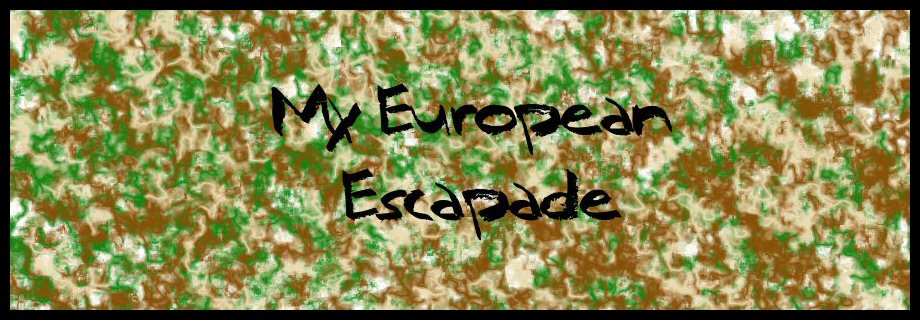Wednesday, August 11, 2010
Krakow: A Day at Auschwitz
The second day in Krakow we woke up early and had a nice breakfast that we had bought the day before at the grocery store. Cinnamon Toast Crunch cereal for me was a perfect way to start the day off. We then waited for our bus to Auschwitz, which picked us up at 11:30 AM in front of our hostel. The trip to Auschwitz takes about an hour and 15 minutes, depending on traffic. The town is actually called Oswiecim and has been an industrial town in Poland for many decades. This is one of the reasons that the Nazi's chose this place as a concentration camp, because of the industrial productivity and the great railway connections to the rest of Europe. Auschwitz was in fact the largest Nazi German concentration camp and death camp during WWII. During the five year period of 1940-45 the Nazis deported at least 1.3 million people to Auschwitz. Auschwitz was originally a camp for intellectuals and political dissidents. This meant that the first visitors of Auschwitz were professors, lawyers, doctors, politicians, and any other person who could potentially go against the Nazi regime. In 1942, the Nazis shifted their position and began the mass extermination of European Jews, and there were Jewish people brought from all over Europe to die at Auschwitz. Of the 1.3 million confirmed victims, 1.1 million of them were Jewish, with the next largest population being Polish citizens (150,000) and gypsies (23,000).
Arriving to the actual site we were greeted by the main facilities building, which had bathrooms, cafeterias, and the such. We waited for our tour to begin and looked around. Auschwitz used to be a Polish army base, which was why there were already brick barracks. The Nazis installed two fences, the first being a barbed wire fence and the second being an electric fence and they eerily stood on the perimeter as a reminder of what was inside. I was actually surprised how beautiful the actual camp was. There were large trees, weeping willows and the sunshine and cool breeze made a nice scenery. It just goes to prove that I don't think any human mind can fathom the horrors that happened here. When the tour started we first began at Auschwitz I, where the bus dropped us off. The second part of the tour was going to be in Auschwitz II-Birkenau the much larger part of Auschwitz which held over 100,000 people at one time. Auschwitz I wasn't so large, but still housed 7,000 prisoners and a majority of the Nazi buildings.
Our tour through Auschwitz took us through the gate that greeted all prisoners of Auschwitz. The gate mocks the prisoners entering by saying, "Work Brings Freedom" in German (Arbeit Macht Frei), when in fact many of those entering the camp were never meant to leave alive. The brick barracks formed lines and aisles around a gridline pattern of dirt roads. We entered the first barrack to learn about the lives of prisoners. The overwork, exhaustion and starvation that each person endured was so extreme that many people only lived weeks or months at Auschwitz. Working 11 hours a day with a slice of bread and bowl of soup for dinner was enough to lose half their body weight. Walking down the halls of the first barrack were hundreds of photos taken by the Nazis of the incoming prisoners. Each photo had two dates, the day they entered Auschwitz and the day they died. Most lasted only a couple months, some not even a week and others a year and months. The other barrack we went through talked about arriving at Auschwitz and the Nazi plans. Selection of prisoners was done immediately upon arrival. Since many of the people arriving had been Jews, they were bringing with them many of their possessions for their "relocation." The selection process first began with men and women and they were then selected on their ability to work. Those unfit for work were sent immediately to the gas chambers, where they were asked to strip naked for a sanitation bath. In Auschwitz II-Birkenau, nearly 2,000 people were forced into a chamber at one time, with five gas chambers in the camp. Auschwitz I had two chambers, each fitting up to 700 prisoners. Children were almost immediately sent to the gas chamber or kept for medical experiments. The gas chambers were built partially underground to prevent air from entering. The Nazis would stand on the roof of the building, with grass and dirt, and would drop the Cyclone B into the chamber from above. Attached to the chambers would be the crematorium, where the dead bodies were immediately burned. The Nazis killed many many people here and the saddest part is that they would have killed more but were unable to dispose of the dead bodies quickly enough. After 1942, people living near Auschwitz could distinctly remember the horrible smell that would blow through due to the burning of dead bodies in the open forest.
Our tour then continued on to show us the possessions of the prisoners, taken at the beginning. Thousands of combs, eyeglasses, pots & pans, toothbrushes, toys, dolls, watches, suitcases and shoes piled six feet high and 20 feet wide. Not to mention the tons of hair that was shaved off of each prisoner. The tour then continued on to the one building called the Death Block. It was essentially a prison within the walls of Auschwitz. Prisoners accused of dissent, planning escapes, creating disturbances or other "crimes" were sent here to be tortured or murdered. The Nazis didn't want other prisoners to know what was going on here, and so the Death Block was heavily guarded and walled off. The first thing when entering the courtyard of the Death Block was a concrete wall where prisoners were openly shot. That was a very moving thing to see, because it was upon seeing this wall that I began to get a sense of things that had gone on. It was really terrible. When we entered the building, we went through the halls, kept in their original condition from the 1940s. We passed the rooms where the first experimentation of poison gas was conducted, where the prisoners were held, and went down to the basement where the cells and prison chambers were. There were 20 cells, four of them being standing cells no more than 1m x 1m. The prisoners were still forced to work and then forced to return to these cells at night. In the standing cells, many died from suffocation and exhaustion.
The next part of the tour, and last part in Auschwitz I, was entering the only remaining gas chamber. When the Germans found out that the Russians were approaching, they blew up the five gas chambers in Birkenau but kept the two in Auschwitz I since they had been decommissioned for two years before the end of the war. Entering the chamber was really crazy. There are no amount of words to describe how much those walls talked. Upon leaving, I think every single one of us were with nothing to say.
The second part of the tour took us to Auschwitz II-Birkenau, located 3 km away from Auschwitz I. Birkenau has the train station where the prisoners were dropped off, the platform where they were sorted and the barracks where over 100,000 prisoners lived. In 1942, when the Nazis began to focus on exterminating European Jews, they decided they needed a larger campus. The began by first creating the barracks for women, using brick and mortar, but they found this to be inefficient due to the influx of prisoners. They then switched to creating wooden barracks, many of them have been destroyed. Birkenau is a field of graves, with the chimneys that were used to warm each barrack being the only remaining gravestones to mark the now decayed wooden barracks. The chimneys are one after another for many acres, row after row after row. We were allowed to enter two reconstructed barracks, the first representing the living quarters. Each barrack housed hundreds of prisoners, with only two fires to warm the barrack during the bitterly cold Polish winters. The guide reminded us that these conditions were not meant to keep them alive, but merely to allow them to live enough to work until death. The second barrack was the toilet barrack. The prisoners were allowed to use the bathroom twice a day, and privacy was non-existent. 2,000 prisoners would enter the bathrooms, which was a concrete trench, with no water or drainage. They would be forced to sit on holes, one right next to another for maybe 60 seconds at a time, before they were forced away. The lack of food and poor living conditions ultimately meant that the prisoners were bound to be sick, and the toilets were certainly an epicenter for disease.
After the barracks, we walked down the train tracks and the platform to the very end of the camp, where the blown-up remains of the gas chambers stood in a pile of concrete and grass. This concluded our trip with a moment of silence. It had been raining for the middle of our tour, and now the rain begin to sprinkle down, almost in a symbolic representation of our somber moods. I certainly will never forget this trip and I'm glad we made the journey here. Auschwitz will forever be a testament to the extent of human cruelty towards one another and should be a monument to prevent any future genocide of mankind. I ask everyone to remember those victims of the Holocaust, Jewish and others, children and elderly, and all of the innocent lives that were taken away so painfully during the years of German Nazi rule. They will never be forgotten.
Subscribe to:
Post Comments (Atom)


No comments:
Post a Comment